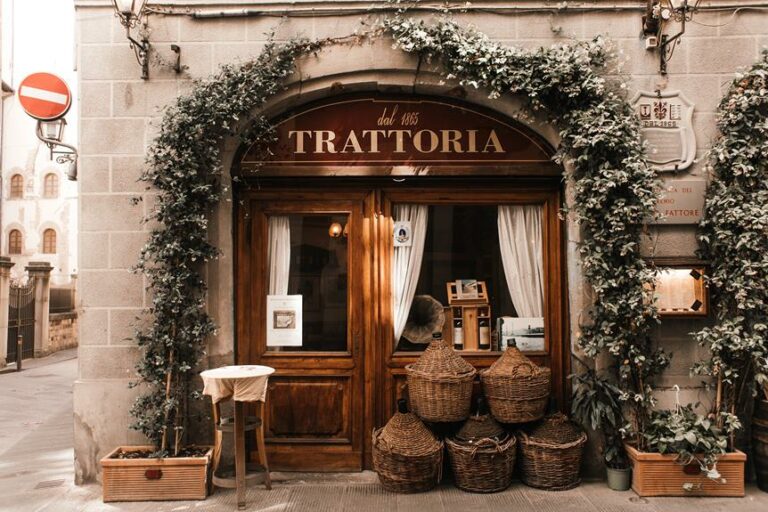Looking to add a touch of natural beauty to your garden? Well, have you ever considered turning a plain old tree stump into a stunning planter?
It may sound like a daunting task, but fear not! In just a few simple steps, you can transform that unsightly stump into a unique and eye-catching centerpiece for your outdoor space.
So grab your gardening gloves and get ready to unleash your creativity as we show you how to make a tree stump planter.
Key Takeaways
- Choose a sturdy and flat-topped stump for the planter, avoiding rotten or decaying stumps.
- Consider the stump's environment and select plants that complement each other in terms of color, texture, and height.
- Implement proper watering techniques, use organic mulch, and regularly check the moisture level of the soil to care for your tree stump planter.
- Regularly inspect the planter for pests, encourage natural predators, and implement physical pest control methods to maintain the planter's health and hygiene.
Choosing the Right Stump
You should find a stump that's sturdy and has a flat top surface for your tree stump planter. Choosing a suitable stump is crucial to ensure the success of your planter. Here are some tips for stump selection.
Firstly, look for a stump that's strong and stable. It should be able to withstand the weight of the soil, plants, and any decorations you plan to place on top. Avoid stumps that are rotten or decaying, as they won't provide a stable base for your planter.
Secondly, consider the size and shape of the stump. Ideally, you want a stump with a flat top surface that's large enough to accommodate your desired plant arrangement. A wider surface area will allow you to plant a variety of flowers, herbs, or even small shrubs. Additionally, a stump with interesting natural contours or edges can add visual appeal to your planter.
Another important factor to consider is the location of the stump. Ensure that it will receive adequate sunlight for the plants you intend to grow. Also, consider the surrounding landscape and how the stump planter will fit in with the overall aesthetic.
Lastly, take into account the overall condition of the stump. Look for any signs of disease or pest infestation, as these can affect the health of your plants. It's best to choose a stump that's in good condition and free from any potential hazards.
Preparing the Stump for Planting
Before starting the planting process, it's important to prepare the stump by removing any loose bark and debris. This will create a clean surface for planting and ensure the best conditions for your plants to grow. Here are four steps to help you prepare the stump for planting:
- Tree stump removal: If the stump is still attached to the ground, you'll need to remove it. This can be done by using a chainsaw or stump grinder to cut it down to ground level. Alternatively, you can hire a professional tree removal service to do the job for you.
- Clearing away loose bark: Use a stiff brush or scraper to remove any loose bark from the surface of the stump. This will help prevent pests and diseases from infesting your plants and provide a clean canvas for planting.
- Removing debris: Inspect the stump for any remaining debris such as roots or rocks. These can hinder plant growth and make it difficult for the roots to establish themselves. Use a shovel or garden trowel to carefully remove any unwanted debris.
- Consider alternative uses: If you don't want to plant directly into the stump, you can explore alternative uses for it. Stumps can be turned into unique outdoor seating, tables, or even decorative pieces. Get creative and think of ways to repurpose the stump in your garden.
With the stump now prepared, you're ready to move on to the exciting part of selecting the perfect plants that will thrive in your tree stump planter.
Selecting the Perfect Plants
To ensure the success of your tree stump planter, start by considering the types of plants that will thrive in both the stump's environment and your desired aesthetic. Choosing suitable plants is crucial for creating a beautiful arrangement that will flourish in this unique setting.
When selecting plants for your tree stump planter, it's important to consider the stump's environment. Factors such as sunlight, soil conditions, and moisture levels will determine the types of plants that will thrive in this space. Additionally, think about the size of the stump and the available planting area. Some plants may require more space to spread their roots, while others can thrive in smaller containers.
To help you choose suitable plants for your tree stump planter, here is a table showcasing a variety of options:
| Plant Name | Light Requirements | Soil Preference | Plant Height |
|---|---|---|---|
| Ferns | Partial Shade | Moist, well-drained soil | Varies |
| Succulents | Full Sun or Partial Shade | Well-draining soil | Varies |
| Petunias | Full Sun | Well-draining soil | 6-18 inches |
| Hostas | Partial Shade to Full Shade | Moist, well-drained soil | Varies |
Remember to design a beautiful arrangement by selecting plants that complement each other in terms of color, texture, and height. For example, you can pair the delicate fronds of ferns with the vibrant blooms of petunias, creating an eye-catching contrast. Mixing different plant heights can add depth to your planter, creating a visually appealing arrangement.
Planting and Arranging in the Stump
Once you have selected your plants and gathered your materials, it's time to start planting and arranging in the stump. Creating a tree stump planter can be a fun and creative way to display your favorite flowers and plants. Here are some steps to help you with planting and arranging in the stump:
- Prepare the stump: Before planting, make sure the stump is clean and free of any debris or loose bark. If needed, you can sand down the edges to create a smooth surface.
- Add soil: Fill the hollowed-out portion of the stump with potting soil. Make sure to leave enough space for the roots of your plants. You can mix in some compost or organic matter to enrich the soil.
- Plant your flowers: Choose a variety of flowers that will thrive in the conditions of your chosen location. Arrange them in a way that creates a visually appealing composition. Consider the height, color, and texture of the plants to achieve a balanced look.
- Water and maintain: After planting, water the flowers thoroughly to help them establish. Regularly check the moisture level of the soil and water as needed. Keep an eye out for any pests or diseases and take appropriate action to maintain the health of your plants.
Arranging flowers in a tree stump planter allows you to showcase your creativity while adding a unique touch to your garden or outdoor space. With proper care and maintenance, your stump planter can become a stunning focal point that will surely impress your guests.
Caring for Your Tree Stump Planter
To ensure the longevity of your tree stump planter, regularly maintain and nurture it. Proper care is essential to keep your planter healthy and thriving. This includes implementing effective watering techniques and pest control methods. By following these steps, you can ensure that your tree stump planter remains a beautiful and vibrant addition to your garden.
Watering Techniques:
Proper watering is essential for the health of your tree stump planter. Here are some guidelines to follow:
| Watering Technique | Description |
|---|---|
| Deep watering | Water the planter deeply, ensuring that the water reaches the roots. This promotes root growth and prevents the soil from drying out too quickly. |
| Mulching | Apply a layer of organic mulch around the base of the planter. This helps retain moisture in the soil and regulates the temperature, protecting the roots from extreme heat or cold. |
| Regular monitoring | Keep an eye on the moisture level of the soil. Check the top few inches and water as needed, making sure not to overwater or let the soil become too dry. |
Pest Control Methods:
Pests can pose a threat to the health of your tree stump planter. Here are some pest control methods to consider:
| Pest Control Method | Description |
|---|---|
| Inspect regularly | Regularly inspect your planter for signs of pests such as aphids, snails, or slugs. Early detection allows for prompt intervention. |
| Natural predators | Encourage natural predators such as ladybugs or birds that feed on pests to inhabit your garden. This can help control pest populations naturally. |
| Organic insecticides | If necessary, use organic insecticides as a last resort. These are less harmful to the environment and can effectively eliminate pests without damaging your plant or soil. |
Conclusion
In conclusion, creating a tree stump planter is a creative and sustainable way to repurpose an old stump in your garden. By carefully selecting the right stump, preparing it for planting, and choosing the perfect plants, you can transform it into a beautiful and unique planter.
Just like a forgotten stump can be given new life, so too can we find beauty and purpose in unexpected places. Let your garden be a metaphor for resilience and growth, reminding us that even in the toughest of times, beauty can bloom.





